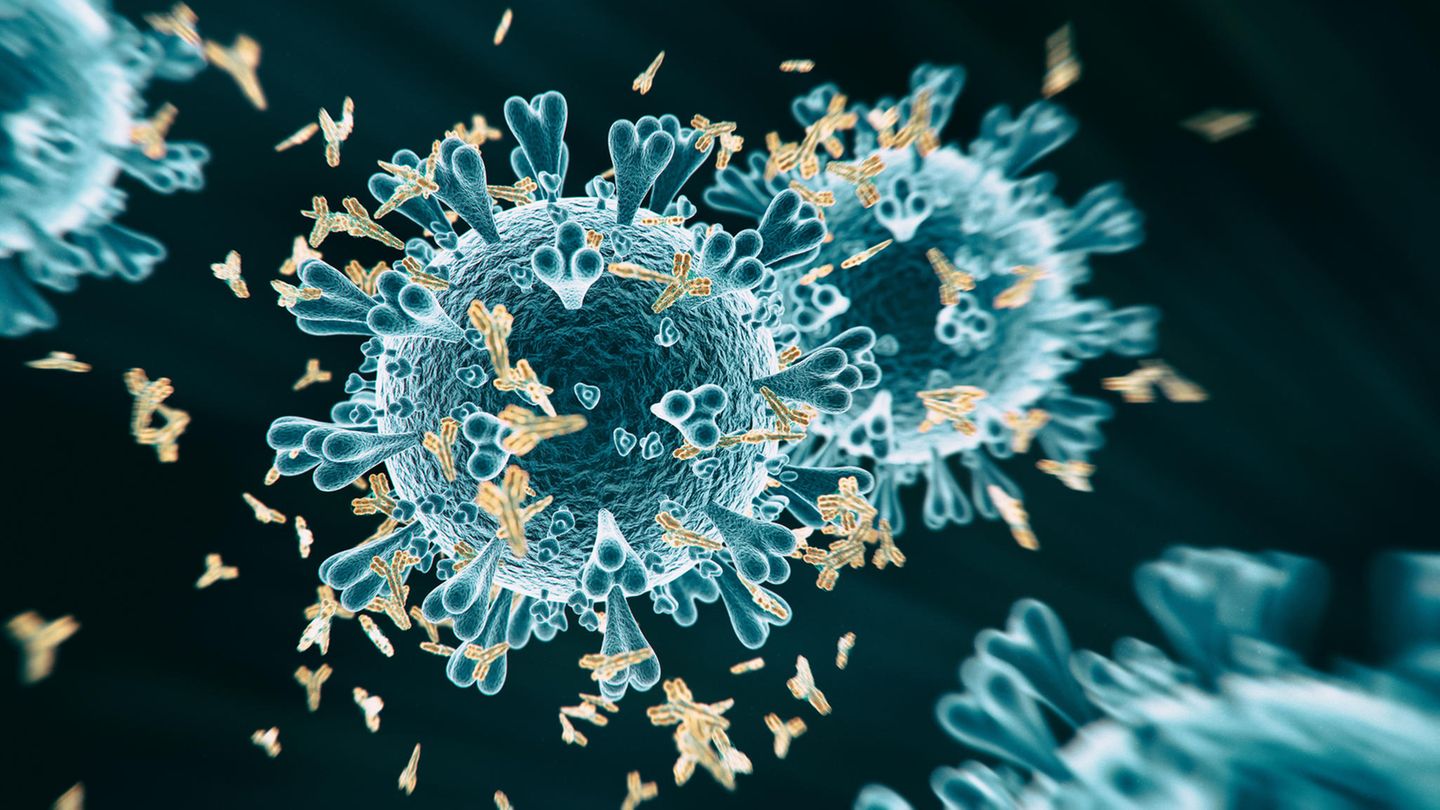The higher the amount of antibodies, the lower the risk of Covid 19 disease. But how many are necessary for adequate protection? A British research team has now defined the first limit values. But many questions remain open.
In the fight against the coronavirus, neutralizing antibodies are one of the most important helpers. Because they are able to recognize the virus and prevent it from entering the cells and multiplying there. So they work like the body’s own bouncers. The body produces such antibodies when it comes into contact with the virus, i.e. after an infection, or – as in the case of vaccinations – with certain virus components. The more antibodies are developed, the stronger the resistance against the virus.
But the immune defense works differently in every person, how good and how lasting the individual immune protection is is so far difficult to answer. Scientists see one possibility in determining the necessary amount of antibodies in the blood, a so-called immune correlate. This could, for example, show when a booster vaccination makes sense. A team of researchers from Oxford University has now presented the first data.
Researchers define the first limit values
For the study, which was published in the renowned journal “nature medicine”, the British scientists examined the antibody levels of 1,575 people from Great Britain 28 days after they had received their second corona vaccination. These were participants in the registration study of the Astrazeneca vaccine. 171 people, i.e. almost one in ten, became infected with the coronavirus within the following 90 days. Symptoms developed 74. The researchers then looked at how many antibodies against Sars-CoV-2 each participant had in their blood at that point in time. Based on this, they defined limit values for two different antibodies.
According to this, 80 percent of people were protected from symptomatic illness if, 28 days after the second vaccination, IgG antibodies against the corona spike protein in the amount of 264 binding antibody units per milliliter of blood were found. IgG antibodies are formed around three weeks after initial contact with the pathogen. If another infection occurs as a result, the body is able to “remember” this contact and quickly form the appropriate antibodies.
Immune correlate: uncertainties remain
The research team determined another value for antibodies that act against the receptor-binding domain (RBD). The RBD is found in the spike proteins of viruses. It decides where on the surface structure of the host cell the virus attacks. If the antibody level of the anti-RBD-IgG is 506 per milliliter of blood, then there is also 80 percent protection. The researchers were unable to set a limit value for asymptomatic diseases.
Researchers have already come to similar results for the vaccine from Moderna. So far, however, this study is only available as a preprint and has not yet been checked by independent experts. It should be noted that in both studies the confidence intervals for the values determined are very large – so there is even greater uncertainty about the actual level of the immune correlate. A confidence interval is the confidence interval of measured values that provides information about the precision or inaccuracy of a measured value
The study from Great Britain therefore provides initial indications, but nothing more. The study mainly enrolled white subjects from the United Kingdom. The participants who became infected in the further course were mainly infected with the alpha variant that was circulating there at the time. In regions in which this variant is not predominant, the scientists restrict, “the modeled relationships between immune markers and disease outcomes shown here may not apply”. The same applies with regard to protection after a first vaccination dose of the same vaccine or with regard to other vaccines. The results relate solely to sample analysis after two vaccinations with Vaxzevria from Astrazeneca. Since only a few older adults took part in the study, no statements can be made as to whether the age structure has an influence on the results.
“Not translatable into clinical practice”
“In general, it is important that at some point we can define an immune correlate in order to make immunity to SARS-CoV-2 measurable,” says Carsten Watzl, head of the immunology research division at TU Dortmund. Such a value is useful for predicting how long one will be protected, for example who will need a third dose of the vaccine. Watzl classifies the study as an initial value for immune protection. As antibody tests have been standardized and antibody levels have been standardized, data from different studies, such as those on the Astrazeneca and Moderna vaccines, could be compared. However, several such studies will still be needed before a final limit value can be set.

Antibody titers can be measured relatively easily and precisely in practice, insofar as this is an important study, says Bernd Salzberger, head of the Infectious Diseases Department at the Regensburg University Hospital and chairman of the German Society for Infectious Diseases. However, he points out that the statistical reliability of the data is still low. “To get more accurate estimates, much larger patient populations have to be examined,” he says. In addition, the study does not take into account any time factor – i.e. a decrease in the protective effect over time.
“With these restrictions, the results can by no means be translated into clinical practice: It is not possible to draw conclusions about the parameters used in the study from a daily titer value,” he said. Calculating an individual protection value on the basis of this evaluation is therefore nonsensical, and also because of the large confidence intervals, “he says. In other words: Salzberger advises against having the antibody titers determined individually and deriving a protective effect on the basis of the study results.
Source:, Quotes from Science Media Center




